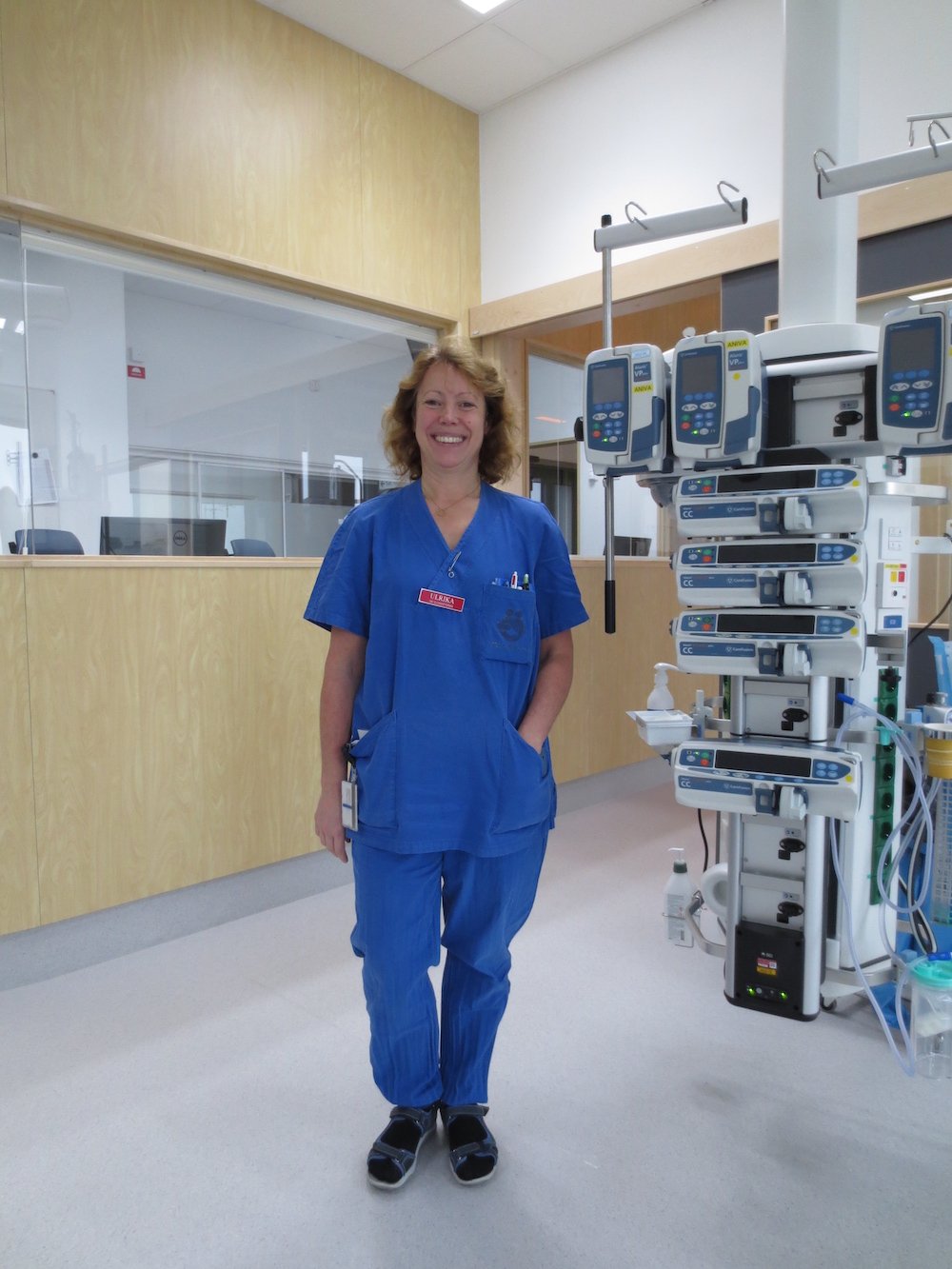Light based on research. It was a fundamental priority when selecting lighting for the intensive and neuro-intermediate department at Örebro University Hospital.
— Now when we have the opportunity to build modern, we must build modern.
That's how it sounded when Ulrika Thörn, biomedical responsible intensive care nurse at IVA Örebro University Hospital, took on the role of construction and relocation coordinator for the new H-building project. The intensive care department was expanded with a total of 40 beds along with a new neuro-intermediate department. The project started in 2016, and Ulrika Thörn was involved in determining the lighting to be used. Chromaviso evidence-based circadian lighting was chosen.
— There was never any doubt that we should have good lighting, says Ulrika Thörn, continuing:
— We always base our work on science. Since there is research in this area, it is clear that we will rely on it. It was the underlying research that made the solution interesting.
Working environment and patient care
Improved well-being for the staff and enhanced patient care were two significant factors.
— One of the major issues experienced by intensive care patients is the disruption of their circadian rhythm. Patients can suffer from hallucinations and altered perception of reality. If something can be done to help patients achieve a better circadian rhythm, it is worth it, explains Ulrika Thörn.

The choice of supplier
When it was time to choose lighting, Ulrika Thörn and her colleagues visited various hospitals to see what solutions had been implemented elsewhere. One of these visits was to Hudiksvall Hospital, where evidence-based circadian lighting from Chromaviso had been chosen. In addition to being satisfied with the results, Ulrika Thörn appreciated the clear guidance provided by Chromaviso.
— Chromaviso has a concept. They know what the research shows, they know that others appreciate it, and they understand the role the solution can play between satisfaction and research. They come up with a proposal, and they can customize it to make it work well. It felt like a comprehensive solution, which I must say appealed to us, she says.
Already experiencing a difference
Since the circadian lighting was recently installed in the department, it may take some time before Ulrika Thörn can conduct a representative evaluation of its effectiveness. However, she already notices a difference.
— It's fantastic to have the right work light in the middle of the day. When you're in the new premises, you feel a tremendous difference in the lighting. You can feel a bit down when you go over to the old department, just in terms of lighting. It's already noticeable there, she says.
Turnkey solution
Chromaviso has provided a comprehensive delivery with the implementation of the lighting solution. To ensure optimal effect and satisfaction, Chromaviso has trained the staff in the use of circadian lighting.
—There have been follow-ups, adjustments, better times, etc., to ensure a good solution. It's not a problem to call if there's anything. I'm satisfied, concludes Ulrika Thörn.

